
White Tower
Imposing
The second day of being a tourist, following our visit to Tower Bridge, took Heather and I in close proximity. It wasn’t what we were meant to be doing. The entire reason for booking a London hotel and having two days of tourism was we were supposed to be up early to spend time sailing down the Thames and Medway on the Waverley but she unfortunately suffered damage on the way up to London so couldn’t sail. To console ourselves we were instead up for more or less the opening of the Tower of London.
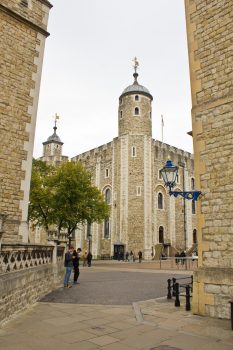
The Tower
It’s over there
Strangely, despite my interest in castles and living in London (with the office being a not very long walk away from it), I’d never been to the Tower before, having only ever circled the perimeter of its impressive curtain walls. Heather had been promising for some years to actually take me within, so failure of one adventure seemed a good opportunity to put right another. So it was we found ourselves crossing the attraction of the day before to arrive more or less at just about opening time at the barbican entrance beside the river, checking in to begin our exploration.
We began, at Heather’s suggestion, at the Waterloo Block, the modern day home of the Crown Jewels, arriving before the queues and crowds got going. I have to confess that I began to get the feeling that once you’ve seen one sparkling jewel on top of a random rod, you’ve seen them all (and there’s also the nagging suspicion that these aren’t the real ones, which might well be somewhere else less public entirely). And as a republican (not my king!) it doesn’t appeal to see the insane wealth of embedded in meaningless objects. So I left Heather about halfway round and had a poke around outside, being particularly amused by the monkey sculptures (a call back to when wild animals were regularly kept at the Tower).

Henry VIII
On horse
Sparkly things done with we wandered round the bailey for a bit, before heading into the great tower itself. The towering stones of the massive keep loom over the modern entrance stairs, giving a sense of the strength of the castle. Within the entrance floor is dominated by armour of a bygone age—the keep long held an armoury—glinting in the low light. Magnificent models of horses stand almost as protected as their riders in gleaming metal casings. And of course there’s the famous cod piece of Henry, which gives the distinct impression of over compensation.
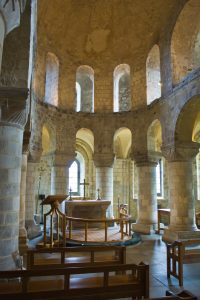
Chapel
A simple but effective design
Further on there’s a chance to admire the beautiful chapel within the keep, quietly understated in its elegance, while more floors hold yet more armoury, not all of it British. At the top is an interactive space, popular with the children but lacking a bit for the adults having made the climb. It’s also a shame there’s no way out to the parapets to enjoy the view.
The tourist route through the keep then slightly strangely drops all the way back down past all the floors just visited (this time using an original spiral stair rather than the sequence of later additions on the way up). One goes down and down in dizzying circles to below the entrance and the basement of the keep. Here there are more weapons, now moving into the age of gunpowder and guns, as well as a nod to the keep’s possible, or probable, role in torture. It’s all too easy to imagine some of those white washed vaults echoing with screams.
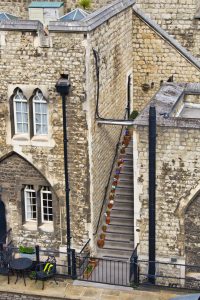
Flower Steps
A little homely softening
Back outside the sunshine was a sharp contrast to the gloom of the Tower. We found ourselves hunting for lunch, getting a little lost but taking in the famous execution spot (reserved mainly for royalty—the main place of execution at Tower Hill lies just outside the walls). We also saw one of the famous ravens wandering around. Having eventually found the New Armouries Cafe (not overly impressive) we were fed and watered and ready to explore some more.
We headed for a tour round the walls, circling above the inner and outer yards, beginning by the Lanthorn Tower, in an area extensively remodelled for a more romantic feel by the less heritage minded architects of the past. Swinging round the south-east corner Salt Tower there’s a fine view of the approach to Tower Bridge, some of the outer walls snug against the road where it effectively cuts through the moat. What one doesn’t realise so much from outside is just how much accommodation is squeezed against the outer limits, houses for the staff who live on site, complete with little pot gardens wherever they can make them.
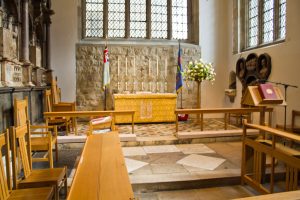
Alter
There are queens buried beneath
It’s not possible to fully circuit the walls now, making it about as far as the Devereux Tower before being forced down into the bailey below again. That found us with close proximity of the castle’s main chapel, The Chapel Royal of St Peter ad Vincula, so it was the next obvious stopping point. The little chapel is of course the final resting place of many of those who met there end at the green just outside, including queen’s of England (though it’s not necessarily known where that place is, exactly). Beyond that knowledge the most notable aspect is the organ and the tale of the font, lost when hidden in a tomb (from the Parliamentarians) and only found again centuries later.

Fancy Carved Momentos
I’m always amazed at the quality of prisoner’s carving
Leaving the chapel behind we wandered around some more of the towers, replete with the tales of those who lived or, more often, where imprisoned within them. Sometimes those imprisoned would actually be living in luxury not afforded to many of the freer citizens beyond the walls. A great many of the occupants left their marks too, carving often intricate graffiti and marks into the stones of their prisons. Included in our little tour was the infamous Bloody Tower, where two very young princes may well have been murdered. Interestingly the Bloody Tower was once the castle’s watergate (Traitor’s Gate came later) and is still fitted with its protective portcullis.

Nice Bedsit
Everything you could want
Above that later watergate (St. Thomas’ Tower, but much better known as Traitor’s Gate after the numerous prisoners arriving into the tower through it, having been conveyed along the Thames), lie the apartments built for Edward I, a Royal living quarters within the castle. We explored through them, marvelling at the bedroom and tiny, tiled chapel, passing the arched link over the inner bailey to the Wakefield Tower.
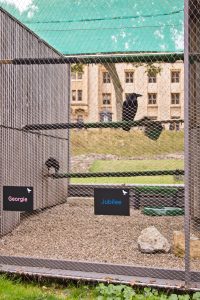
Georgie, Jubilee
Two of the ravens
There were only a couple of things left to do now. We went to say a proper hello to the all important ravens, who’s absence would mean the fall of the kingdom (no matter that is a relatively modern myth). These days they are housed in a little row of caged sheds at what would have been the corner of the most inner ward, the crumbling remains of the ward’s protective wall beside them. One raven looks much like another to the uninitiated, so it was hard to tell if the name signs matched up to the bird visible. After calling in the raven themed shop adjacent we headed round to what was the Tower’s mint, though to be honest it wasn’t that interesting. And so tiring there was a final exploration of some more torture before passing through an unassuming postern out onto tower wharf.
We circled anticlockwise again, this time outside the walls, and round to the Minories to rest and consider our next move. We decide to complete our outer circuit of the tower, finding our way down to the Tower pier and picking up a tourist boat up river to Westminster, braving the increasingly chilly weather to pass HMS Belfast, the Shard and other landmarks. From Westminster round and up Whitehall, finding ourselves as we always seem to when round that way in The Silver Cross, From there it is but a short walk back to Charing Cross and a train to where the day began.

Lions Oh My
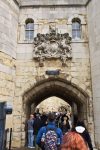
The Full Achievement
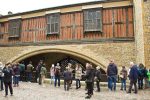
Inside Traitor’s Gate

That Tower

On Guard
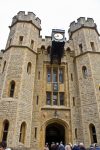
Royal Clock

Troop

The Tower
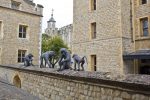
The Monkey Troop
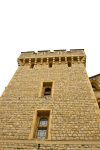
Tower

Weather Vane

Down The Hill
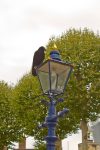
Raven
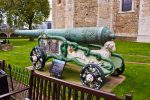
Fancy Cannon
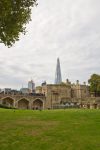
Old And New

Lovely Tree

Towers, Lost Wall, Ravens
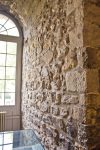
Thick Walls
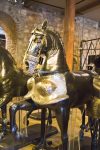
Horse Boobies

Henry VIII

Compensating Much?

What A Relief

Chapel

They Look Dangerous
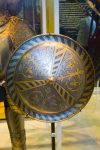
Shield
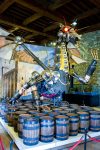
Dragon
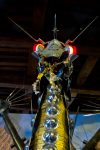
Glowing Eyes
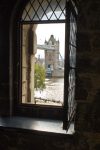
There’s A Bridge Out There
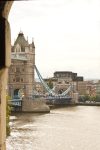
Tower Bridge From The Tower

Castle Model

The Jewels Are In There
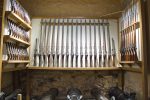
Guns

Just Lay Your Head Down Here

Bell

Trees
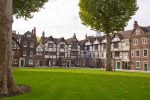
Posh Bits
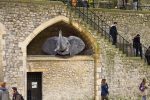
Don’t Mention It

The Pub

Graffiti
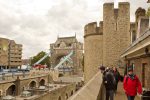
Bridge From The Walls

A Narrow View
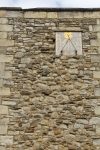
Sundial

Gargoyles

Flower Steps
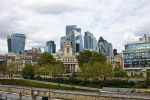
Port Of London Building

Tourist Central
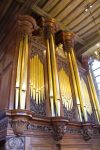
Organ
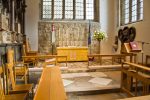
Alter
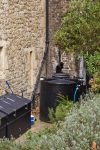
Cat
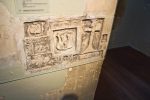
Fancy Carved Momentos

No Entry
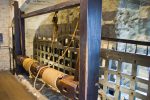
Portcullus
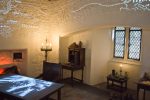
Walter Raleigh’s Room

Round Hole

Marching
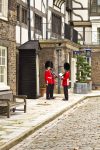
Orders

Portcullis

Linking Arch

The Curvy Things
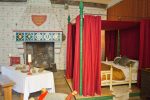
Bedroom
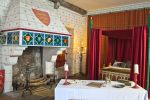
Nice Bedsit
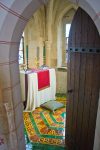
Little Chapel
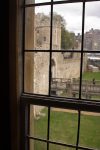
Walls
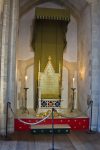
Throne

White Tower

Down On the Ravens

Old Wall
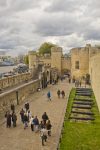
Inside The Tower
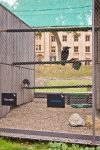
Georgie, Jubilee
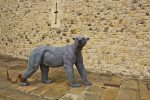
Bear

Rack

Painfull

Gate
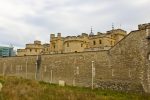
The Great Castle

The Empty Moat
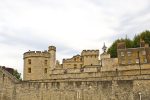
Towers And Towers

Traitors Gate From The River
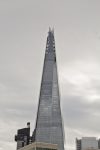
The Shard

Billingsgate

Monument
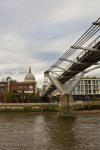
Bridge And Dome

Big Wheel

Comments and Pings